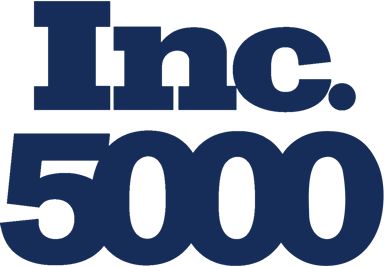What is a Trademark?
A trademark is a legal protection typically used for products and brand identity. Most trademarks are for images, words, or short phrases. Examples include brand names, logos, and slogans.
For example, a brand name like Coca-Cola is protected under a trademark. Another company couldn’t create a product with the same name.
But trademark law goes beyond just protecting the exact brand name. Products with a similar-sounding name are also not allowed under trademark law.
There are three main types of trademarks:
Registered trademark: Identified using the registered trademark symbol ®, these are trademarks that companies registered with the United States Patent and Trademark Office (USPTO). Federal trademark registration helps solidify trademarked material.
Unregistered trademark: Identified using the symbol ™, these are trademarks that companies use on a logo, phrase, word, or design that represents the company.
Service Marks: Distinguishes the services of one business from those provided by another company.
What is a Copyright?
Copyrights protect “original works of authorship,” which can be writings, music, architecture, and art. Under copyright law, the copyright owner has the exclusive right to display, perform, license, or share the copyrighted material for as long as the copyright is in effect.
Some individuals or organizations can use copyrighted material under the fair use doctrine if it is for scholarly, educational, or news purposes only. For example, a Film Studies course in a college can typically use copyrighted movies for educational purposes.
The length of copyright protection depends on when it was established, as copyright laws change over time. Since 1978, most copyright-protected works of authorship are protected for 70 years after the author’s death.
You technically don’t have to register an original work if you translated it into a tangible medium such as a book, piece of recorded or written music, painting, published research, etc. However, registering the material with the U.S. Copyright Office makes it easier to establish ownership and protect against copyright infringement.
Copyrighted material is denoted with the © symbol.
What is a Patent?
Patents protect an original invention for a set time. You must register the patent with the USPTO. The patent grants the patent owner to produce products without competition while the patent is in effect. The protection incentivizes companies and individuals to continue developing new products with market viability.
There are three main types of patents.
Utility Patent
Also known as a “patent for invention,” utility patents protect the creation of a new or improved machine, product, or process. Utility patents are typically good for 20 years, but you must pay regular maintenance fees to uphold the patent.
Other businesses cannot use the patented material giving you exclusive competitive rights. Businesses can use utility patents to protect:
- Machines and appliances.
- Software.
- Business processes.
- Chemical formulae, such as pharmaceuticals or synthetics.
Plant Patent
Plant patents also last 20 years and protect a new and unique plant’s characteristics from being replicated, sold, or used. This type of patent is primarily used in agriculture and horticulture but can have uses beyond that.
Design Patent
A design patent protects the unique look of a manufactured item. Examples include the unique curvy shape of the original Coca-Cola bottle, ornamental designs on jewelry, fonts, car designs, and more.
What are the differences between Trademarks, Copyrights, & Patents?
All three options offer intellectual property protection. The differences depend on the type of I.P. you’re trying to protect.
Trademark protection is primarily used for company or product names, slogans, logos, and other unique brand or business identifiers. Copyrights are used to protect original works of authorship.
While they’re primarily used in creative fields, businesses can copywrite materials as well. Patents are used for unique inventions, designs, and certain intellectual property.
There can be some crossover for particular items. For example, you might trademark a product name a slogan but copyright the music and lyrics of an original jingle used in product advertising.
Another company might patent original software while trademarking the unique logo for that software.
Frequently Asked Questions
Here are the most common questions about trademarks, copyrights, and patents.
Should I Copyright or Trademark a logo?
In most cases, you should file a trademark for an original logo, brand name, or image. Filing a trademark prevents other businesses from using your original logo. As the trademark holder, you’re also protected from companies using a similar logo to sell similar products.
How can I protect my Copyright or Trademark?
One of the best ways to protect a copyright is to register the original work with the U.S. Copyright Office. You should also take some time to learn the limits of what your copyright protects.
Sometimes an individual or company may want to request permission to use your copyrighted work. It would be best to provide contact information for these cases.
You can also consider consulting a copyright attorney to ensure your protection and file lawsuits against copyright infringement.
Similarly, registering your trademark is one of the strongest ways to protect it against trademark infringement. When you register your trademark with USPTO, you establish exclusive rights to it for your business.
Consider conducting a trademark search before registering your brand or logo.
When should I file for a Patent?
Having an original idea for a new product or process is exciting. Many inventors describe the eureka! or stroke of genius moment of developing a new invention. It’s natural to want to share it with the world, but you should usually patent it first.
Under U.S. patent law, you must file your patent application within one year of the first offer to sell the invention or within one year of your first public use or disclosure of your invention. For example, you’d want to file the patent before pitching it on ‘Shark Tank.’
How do I protect intellectual property?
Intellectual property is a broad category. It includes original inventions, designs, creative works, and more. The four main types of intellectual property protections are:
- Patents
- Trademarks
- Copyrights
- Trade secrets
You would select which protection to use based on the type of intellectual property.
Trademark vs. Copyright vs. Patent – Final Thoughts
Having an idea for a product, design, or creative work that will make money is exciting, but you should shield your intellectual property from those looking to profit from your work. Knowing the ins and outs of trademark, copyright, and patent laws is an excellent place to start.
Choosing the proper legal protection depends on the type of intellectual property you want to shield.
Here is a quick summary of intellectual property protection options:
- Trademark: Protects product names, brand names, and logos that distinguish companies from each other.
- Copyright: Protects an original work, such as literary and artistic works, music, and architectural designs.
- Patent: Protects a new or improved invention, process, or design for a manufactured product.
Contact us if you have more questions on legal protections for intellectual property or want to apply for a small business loan.
Our loan executives can help you find the right funding program to bring your unique ideas to market.
















